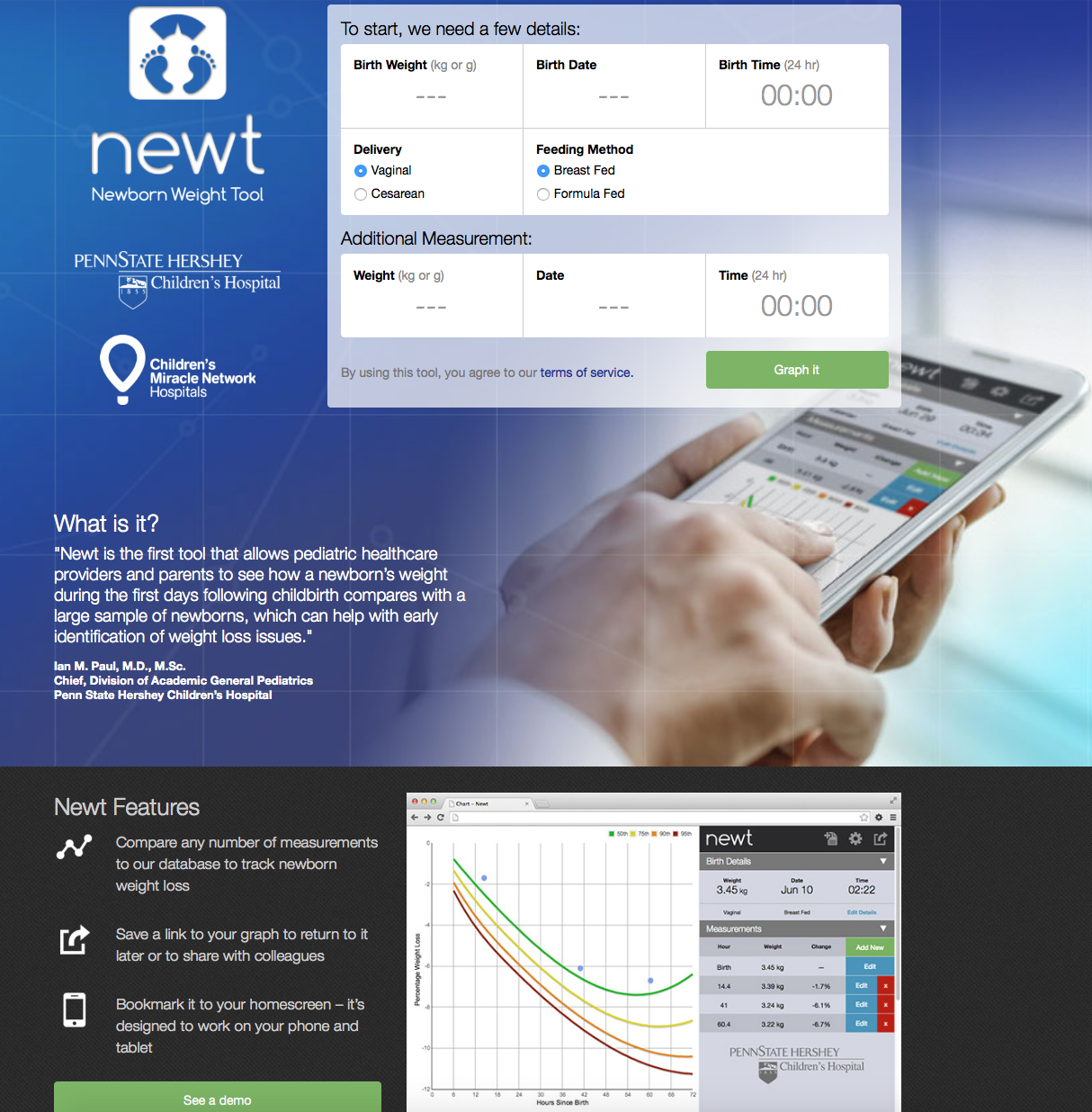Newborn weight tool created through Children’s Miracle Network support

Dr. Ian Paul (’98), a professor of pediatrics and public health sciences at Penn State College of Medicine and a pediatrician at Penn State Hershey Children’s Hospital, developed NeWT, an online tool to advise health care providers on newborn weight. The project was supported by the Children’s Miracle Network.
Dr. Ian Paul knows the importance of Children’s Miracle Network first hand. Through its funding, he helped create a tool for health care providers to determine whether a breastfed newborn is losing too much weight during the first few days of life.
A third of Children’s Miracle Network annual funding is used for pediatric research like Paul’s. Donations to Children’s Miracle Network through events like this weekend’s Telethon on WGAL-TV 8, help purchase equipment like giraffe omnibeds, a pediatric ambulance and a heart-lung bypass machine. Funds also support vital patient programs like Child Life.
As an academic medical center, Penn State Hershey helps improve pediatric care through educating the next generation of providers and through research and development of new technologies. The first of its kind Newborn Weight Tool, or NeWT, is one example of that.
“Funding from Children’s Miracle Network at Penn State Hershey was crucial to allow us to take our research findings regarding newborn weight loss and share them with pediatricians, lactation consultants, nurses, and even parents, around the world,” said Paul, a professor of pediatrics and public health sciences at Penn State College of Medicine and a pediatrician at Penn State Hershey Children’s Hospital. “The funding allowed us to build a website that can be used anywhere on a desktop computer, tablet, or smart phone to help individual babies and their mothers in real time.”
Most exclusively breastfed newborns lose weight after birth, and until now, doctors and parents did not have a way to know if the weight loss was normal or healthy. Dr. Paul, along with Eric Schaefer, a statistician at Penn State, and researchers at the University of California, San Francisco, and Kaiser Permanente, created NeWT, using a research sample of hourly birth weights from more than 100,000 breastfed newborns.
Newborns are typically weighed once a day during their birth hospitalization. To learn if a newborn who is being exclusively breastfed has better than average, average or above average weight loss, health care providers simply go to www.newbornweight.org, enter in the baby’s birth weight, birth date and time, whether the baby was born vaginally or by cesarean section, and the baby’s most recent weight and the date and time for that weighing. NeWT instantly plots the baby’s percentile weight loss on a graph compared to the large data set.
Most hospitals have certified lactation consultants who work with mothers to improve their breast milk output, and by identifying those babies at risk for excess weight loss, health care providers can prioritize their mothers for lactation support. Breastfed babies who lose too much weight during their first few days can experience dehydration-related health problems.
The normal amount of weight loss depends on how many hours old a baby is.
“With NeWT, we can normalize what the expected patterns of weight loss are on an hour-by-hour basis, which has never been possible before,” Dr. Paul said. “This way we can more easily identify those who are at risk for excess weight loss early.”
For researchers like Dr. Paul, Children’s Miracle Network also opens the door to opportunities to receive additional funding from other sources and recruit additional expertise.
“This support also helps us attract and retain superb scientists at Penn State Hershey Children’s Hospital to improve the lives of children locally and beyond,” Paul said.
Penn State Hershey Children’s Hospital has two fundraising programs that are dedicated to saving the lives of children in central Pennsylvania and beyond. In addition to the support received by Four Diamonds, Children’s Miracle Network has raised more than $56 million for Penn State Hershey over the last 31 years.
If you're having trouble accessing this content, or would like it in another format, please email Penn State Health Marketing & Communications.

